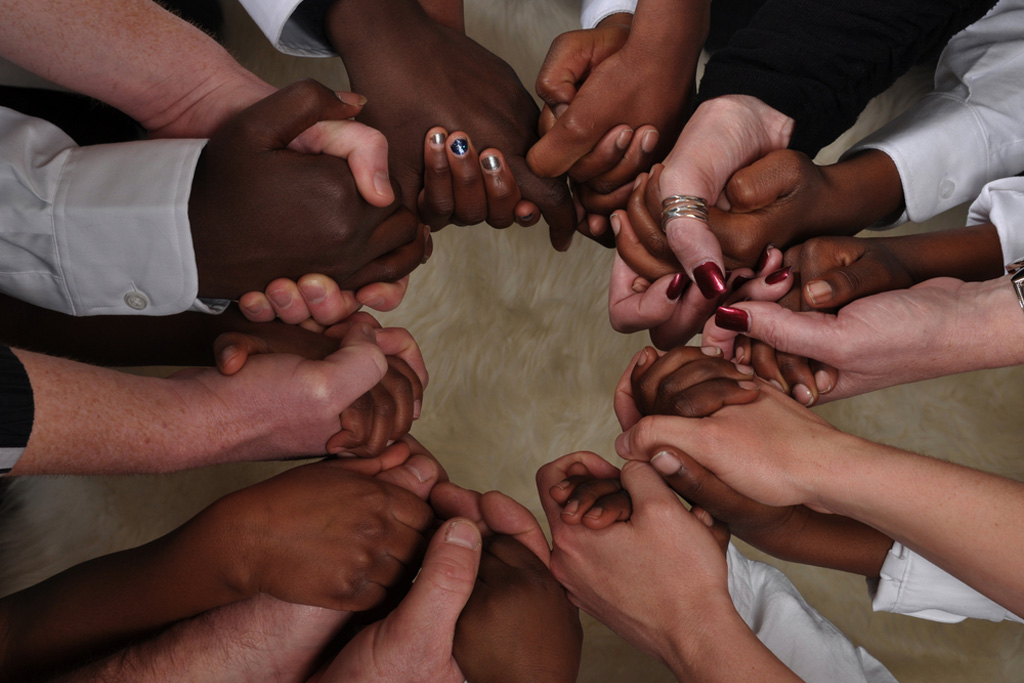More than any other sense, feelings define reality; how we feel about other people and events helps categorize them, influencing our perceptions and telling us what to expect in similar situations.
Feelings are the river of life. They flow from a faucet that you can choose to turn on or off. If you turn it on you must be willing to accept whatever comes out. Although this may create some vulnerability, it’s important to remember that vulnerability is as much a part of being human as strength. In fact, vulnerability prevents strength from becoming hard, brittle or self-serving.
If you turn the faucet off to avoid painful feelings, you lose good feelings like happiness, love, excitement, or creativity. Trying to avoid painful feelings only prolongs suffering; you wind up feeling a little unhappy most of the time instead of feeling very unhappy for a brief time.
Emotions add power, energy and intensity to life. To understand your feelings is to understand the world around you. The more aware you are of your feelings, the more control you have over your life and destiny.
Yet some people have difficulty identifying their feelings, much less expressing them. They are afraid of being vulnerable, of being overwhelmed by a flood of feelings, of “looking bad”. So they develop various ways of trying to protect themselves:
· They may discuss and explain their feelings in an attempt to avoid experiencing them.
· They may deny or repress them, hoping that if they say they don’t feel angry or upset or scared it will be so.
· They may blame others for how they feel, trying to avoid taking responsibility for their feelings.
People who are afraid of their feelings often hold them in until they come bursting out. This always happens unexpectedly, so you aren’t in charge of how, when or where they’re expressed. This creates the very unpleasantness you sought to avoid. It’s not the feelings that are a problem, but the way they are expressed. If you accept your feelings, whatever they may be, you’ll be in command of when, where and how you express them.
THERAPY – HOW DO YOU FEEL?
Social learning determines which feelings we express and which we stifle. Many people report being sent to their rooms as kids “to put on a happy face”, a clear message that it’s okay to show pleasant feelings, but not negative ones. In other families, everyone expresses their angry or indignant feelings loudly and freely but anyone who shows hurt, fear or shyness is called a “sissy” or a “wimp”.
We become conditioned about how to express or repress feelings; this childhood learning becomes part of our adult style of communication and expression.
Many people mistakenly believe that if they ignore unpleasant feelings, they’ll go away. But repressed feelings don’t go away, they just come out indirectly./ People who were taught not to be “negative” may express their anger by “forgetting” to do promised favors or through” joking” criticism. People who couldn’t show vulnerability as children may convert their emotional distress to physical pain, because they can’t be blamed for being ill.
Some people repress feelings of sadness or hurt because they fear being overwhelmed by them: they say, “If I start crying, I won’t be able to stop”. Others don’t know how to show anger, so they hold it in until they explode, producing the very problems they sought to avoid by repressing the anger! Professional counseling can help you recognize and express your feelings.
WHAT DOES YOUR FACE REVEAL?
Our faces don’t reflect our emotions as clearly as we may think. Our culture teaches us to inhibit emotional reactions, so we may not realize how much of our feelings we mask.
Discrepancies between facial expression and the feelings they’re meant to convey affect all kinds of interactions. You scowl at your husband for leaving the milk out, but he does it again later. Wasn’t it obvious from the look on your face how much it annoys you?
Two Dartmouth psychologists videotaped students who were watching funny film clips. Students who thought they had guffawed were described by the researchers as just chuckling. When they saw the tapes of their reactions, the participating students agreed; two-thirds were surprised at how inexpressive their faces had been during the film.
Hostile people have particular difficulty reading facial expressions. In a recent study, hostile people were asked to identify emotions depicted in a series of slides. They accurately identified anger, but mislabeled disgust as anger and misread happy faces as neutral.
This interesting data from behavioral scientists emphasizes the importance of putting your feelings into words. You can’t rely on facial expression, tone of voice and body language to accurately convey your feelings. Good communication is multi-faceted and requires verbal as well as non-verbal signals to get your message across.
Sex Roles
MEN, WOMEN AND FEELINGS
Men and women have been taught to handle feelings differently because of sex roles. In the past our society artificially divided the spectrum of human feelings according to gender, creating sex role stereotypes. Some feelings were considered “masculine” and others “feminine” and both men and women were censored for stepping outside their assigned roles. Each gender could claim only half its humanity.
In the male stereotype, emotion was considered a sign of weakness. Inexpressiveness was mistaken for strength and the “strong, silent” man became a cultural icon whose emotional spectrum ranged from A to B. Anger was the one feeling that was considered “manly”, so it became the way that some men expressed any feeling; whether they felt hurt, scared, uncertain, or sad they acted angry. And, of course, when they were angry, they acted angry! Although they felt other feelings, their fear of criticism kept them from expressing or even recognizing them and they became strangers to themselves.
While the female sex role made it more acceptable for women to show their feelings, they were limited in a different way. Expressing tender, nurturing feelings was “feminine”, but anger was “unfeminine”. Women who expressed hurt or sadness received sympathy, but if they showed anger, they were often labeled an unflattering 5-letter word starting with “B” and ending with “H”!
Traditional roles have changed greatly in the last two decades. The current generation of young men and women are working hard to become complete human beings, but old habits die hard and remnants of the old roles still survive, making it hard for men to be tender and vulnerable and difficult for women to be strong and assertive.
KIDS AND FEELINGS
Kids are experts on feelings. They don’t censor what they feel, and they express their feelings freely.
Parents help children learn to identify their feelings and give them a vocabulary for their emotional life so that they can communicate their feelings to others. Through their own behavior, parents teach children the social conventions about how to express feelings – what is “polite” and what is unacceptable.
For many parents, anger is the hardest feeling to deal with. Children’s angry behavior can cause a lot of conflict. Temper tantrums may catch parents off-guard and pull them into responding angrily, while indirect expressions of anger (like refusing to kiss Mom or Dad good-night) triggers hurt feelings.
Parents’ behavior teaches children how to view anger. If they respond to their children’s anger, hurt or guilt, children learn that anger is bad. If they accept the kids’ angry feelings calmly, and express their acceptance and love, children learn that anger is just another feeling.
The two most important things for children to learn about anger is that:
· Feeling angry is perfectly okay, but some angry behaviors are not
· You still love them even when they’re angry
Children who don’t learn to accept their anger and deal with it constructively grow up fearing their anger and feeling guilty about it. They often believe that anger threatens the stability of relationships and can even destroy them.
MAKING FRIENDS WITH YOUR FEELINGS
Feelings are neither “good” nor “bad”; they are simply feedback from your senses. When you censor your feelings in an attempt to make them match some ideal standard, you are cheating yourself of valuable information.
Although it’s natural to want to avoid unhappiness, even painful feelings serve an important purpose:
· Anger warns that you believe you are being threatened; you think your rights have been infringed upon or you sense a potential loss.
· Depression is a signal that you’re denying your anger – turning it inward where it becomes hopelessness and helplessness.
· Sadness means that you have lost something – a person, a relationship, a role – that is important enough to grieve for.
· Fear signals impending danger and energizes you to take action to avoid it.
· Anxiety nudges you to return to the present. (Anxiety is about something that might happen, so it is always future-focused.)
No one can “make you feel” anything unless you give them the power to do so. If you find yourself using this phrase, realize that you are making that other person very important and that you can choose to take back the power you’re giving them over your feelings.
You have a choice about how you feel. Choose your feelings by choosing your thoughts: Is the glass half-empty or half-full? The reality will remain the same regardless of how you choose to look at it, but one perception creates optimism that fosters pleasure, and the other results in pessimism that causes dissatisfaction.
Research shows that writing about your feelings in a journal can help lower stress and improve your health. It can also help you focus your thoughts and see creative ways to handle your feelings. Some people find that describing your experiences in a story format with a beginning, middle and end helps them come to a resolution about difficult situations.
WHAT’S YOUR BODY SAYING?
Our bodies reflect how we’re feeling in a variety of ways:
· While blood doesn’t actually boil, people’s hands do become warmer when they are angry.
· Hands don’t really freeze, but they are cooler when you’re scared.
· Your heart will beat faster when you’re angry or fearful than when you’re disgusted.
· Psychological stress suppresses immune system functioning, increasing vulnerability to infections and disease and exacerbating existing physical conditions such as infertility, heart disease, and HIV/AIDS.
FEELINGS IN THE WORKPLACE
Expressing feelings at work can be tricky. Feelings are as much a part of the work environment as they are of your personal life, but the more formal workplace structure dictates that feelings be expressed in a more restrained way.
Tears are a natural expression of strong feelings, but people afraid of “losing control” by showing feelings are often uncomfortable with tears – even more so in an office setting. Tears may be misread as weakness or manipulation. If you find yourself feeling tearful when you’re at work, make eye contact with someone. This will stop the tears until you are alone. If this doesn’t work, it maybe best to simply acknowledge the situation and ask for some time alone.
There are many business situations where it is best to postpone discussion or action until your feelings subside. In such situations, you can always say, “I’m too (angry, upset, surprised) to talk about this right now. I’ll get back to you after I’ve had time to think about what I want to say.” This gives you control of the situation and may actually work to your advantage. The other person, wondering what you’re going to say when you resume the discussion, may assume the worst. What you really say or ask for may seem minor in comparison to what they’ve imagined!




